Public transport in Greece is pretty excellent and it can make for a cheap, comfortable and convenient way to get around the country. That might be quite surprising to hear since Greece and other Southern European countries are often stereotyped as being hectic and chaotic.
The reality is that it is possible to get around Greece entirely by public transport for most itineraries. The country has an excellent network of buses, ferries, and domestic airlines that help you reach even the most remote villages, beaches, and islands.
It is only certain off-the-beaten-path areas like the rugged region of Mani in the Peloponnese, Zagorahoria in Epirus, and parts of Evritania, Central Greece that require a rental car. This guide, written by a local based in Greece, will answer everything you need to know about public transport in Greece, and how to get around Greece during your time in the country.
If you plan out a Greece itinerary and you plan on getting around primarily by public transport, rest assured, you will not be stressed out by services that do not run on time. Managing the logistics of your trip will not have you wanting to pull your hair out.
Public Transport in Greece: How to Get Around in Greece in 2024

If you are travelling overland in Greece, one of the best ways to get around using public transport is to take the bus. The Greek train network is not extensive and leaves a lot to be desired currently, although hopefully, things will change in the future.
Greek airlines like Aegean Airlines and Sky Express service domestic flight routes within the country making it easy to get from the mainland to the different Greek island groups, and from Athens to Ioannina and other northern parts of the country. Ferries and hydrofoils are great for island-hopping as a lot of smaller Greek islands do not have airports.
(Actually, only 13 Greek islands have international airports, and 13 Greek islands have domestic airports). So taking local ferries is a necessity to get to a lot of destinations.
Athens has an excellent city transport network consisting of various metro trains, buses, and trams. Thessaloniki as of yet, does not have a metro system.
(One has been under construction for years with no completion date on the horizon yet).
KTEL Buses
KTEL buses (Koino Tamio Eis Praxeon Leoforion) make up Greece’s intercity bus network. Confusingly, there is not just one centralised website where you can check the routes, times, and prices for all KTEL buses in Greece.
KTEL bus providers
Instead, there is a specific KTEL bus website for each different part of the country. For example, KTEL buses that service Athens and the surrounding areas can be booked via the KTEL Attikis website.
KTEL buses in Ioannina, northwestern Greece, and western Epirus are serviced by KTEL Ioanninon, buses in the Thessaloniki area are serviced by KTEL Thessalonikis, and services in and around Halkidiki are served by KTEL Chalkidikis. This means that you may have to use various different websites throughout your time in Greece.
With that being said, where’s the fun in everything being found on one neat, orderly, centralised website?
Complete list of KTEL bus companies in Greece
A list of all KTEL bus companies across Greece is provided below. If in doubt, simply Google the name of the Greek city/area that you are travelling around along with the word “KTEL”, the correct KTEL provider website should then pop up.
- Aiginas
- Aitoloakarnanias
- Androu (Andros)
- Argolidas (Nafplio)
- Arkadias
- Artas
- Attikis (Athens)
- Achaias (Patra port)
- Chalkidikis
- Chanion – Rethimnou (Crete)
- Chiou (Chios)
- Dramas
- Evrou
- Evias
- Evritanias
- Fthiotidos (Lamia)
- Florinas
- Fokidas (Amfissa-Delphi-Athens)
- Grevenon
- Heraklion – Lassithi (Crete)
- Ileias (Ancient Olympia)
- Imathias
- Iou
- Ioanninon (Igoumenitsa)
- Kavalas
- Karditsas
- Karpathou
- Kastorias
- Kerkyras (Corfu)
- Kefalonias
- Kilkis
- Kozanis
- Korinthias (Corinth)
- Kos
- Lakonias (Sparta-Mani)
- Larissas
- Lesvou (Lesvos)
- Lefkadas
- Livadeias
- Magnisias (Volos- Mount Pelion)
- Messinias (Kalamata)
- Mykonou (Mykonos)
- Naxou (Naxos)
- Parou (Paros)
- Pellas
- Pierias (Mount Olympus)
- Prevezas
- Rodopis
- Rodou (Rhodes)
- Samou (Samos)
- Serron
- Syrou
- Tinou (Tinos)
- Trikalon (Meteora)
- Thesprotias
- Thessalonikis
- Thivas
- Thiras (Santorini)
- Xanthis
- Zakynthou (Zante)
The majority of KTEL websites are detailed in both Greek and English. Some rural operators do not have websites, only phone numbers.
This is the case in small villages such as Metsovo. Do not fret, however. Local hotels, restaurants, and businesses will be able to inform you about the schedules.
Taking KTEL buses in Greece
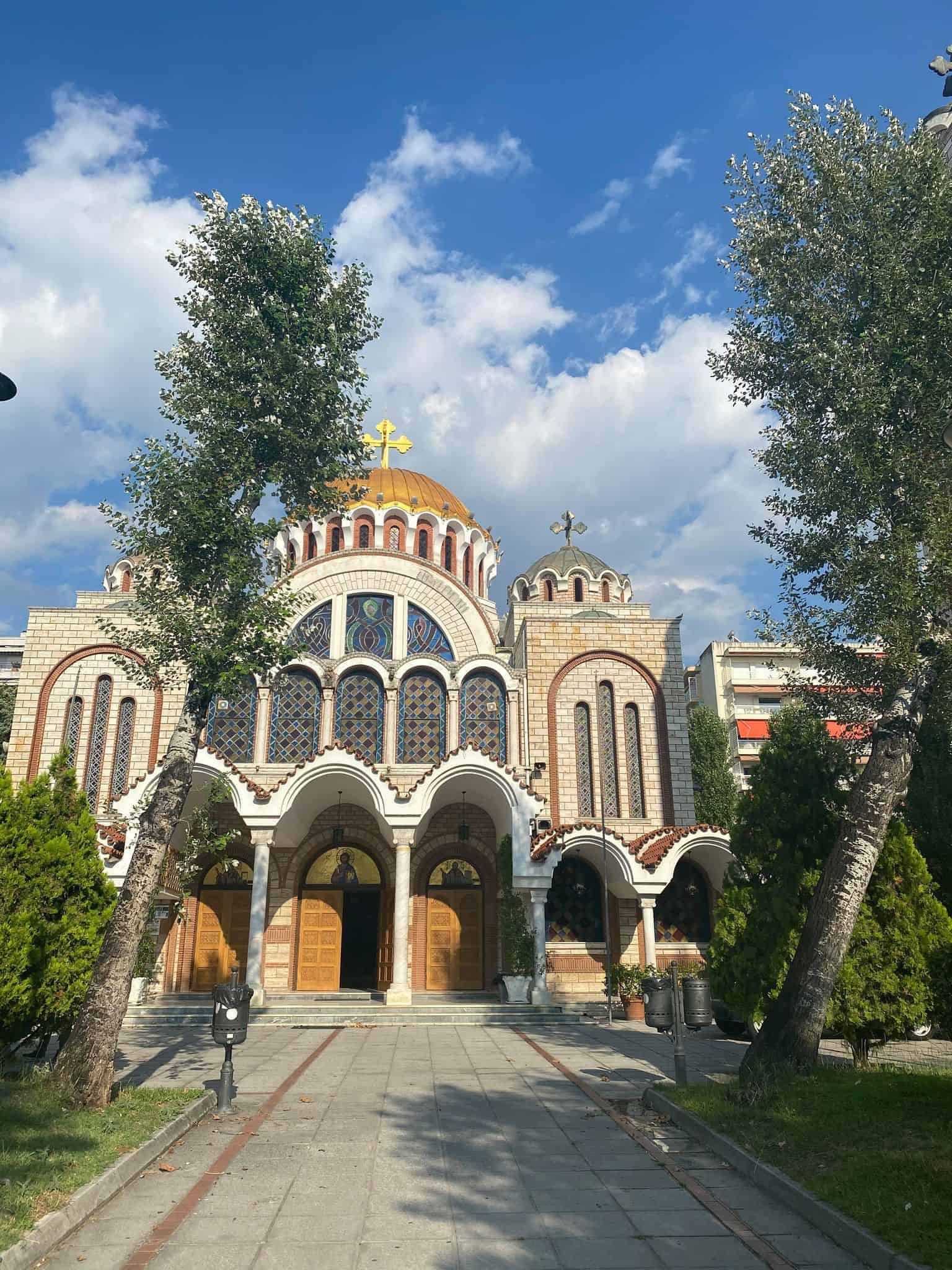
Taking buses in Greece is relatively straightforward. You can purchase tickets online or at the bus station.
You are usually fine to purchase your ticket on your intended day of travel, even right just before your departure time. The only exceptions to this are when travelling on busy public holidays or if taking a bus to a busy seaside town in the summer (e.g. in Halkidiki).
KTEL buses are typically light green. That said, this isn’t always the case!
The buses and their quality varies from area to area. Some rural parts of the country still operate very old buses.
Your bus information and departure gate will be displayed on the ticket. If in doubt, show your ticket to a station worker or a friendly local and they will point you in the right direction.
Exploring the country by bus is a great way to see Greece on a budget. On average, a journey costs roughly €4 per 100km.
Train Travel in Greece
The railway network in Greece is extremely limited and does not service all parts of the country. Trains run between Athens and Patras in the Peloponnese or between Athens and Larisa, Kalambaka (for the Meteora monasteries), and Thessaloniki.
The train gets you between these major cities in a matter of hours and has always been a much faster option than taking the bus. The Greek rail network is managed by the Greek train organisation OSE (Organismos Sidirodromos Ellados).
The OSE site is displayed in both English and Greek. It is possible to purchase tickets for travel online or at the station.
Note that the train website is often glitchy and difficult to use, so it is often preferable to go and buy a ticket in person. (Welcome to Greece!)
Key routes and fares for trains in Greece
As mentioned, trains in Greece only service a very limited number of routes. For your information, the popular routes, their journey times, and their average ticket costs are summarised below.
Keep in mind that ticket prices can often fluctuate and if you book at the last minute during a peak season, they can increase.
- Athens to Thessaloniki: €45 each way, with a 10% discount if you book both legs of the journey together. 4 hour 9 minutes journey time.
- Athens to Kalmbaka: Circa €30 each way. 5 hour 43 minutes journey time.
- Athens to Larissa: Tickets start from €11 each way. 4 hour 4 minutes journey time.
- Thessaloniki to Kalambaka: €11 – €21 ticket cost. 4 hour journey time.
- Thessaloniki to Trikala: €16 – €22 ticket cost. 2 hour, 3 minutes journey time.
- Thessaloniki to Larissa: €6 – €10 ticket cost. 1 hour 35 minutes journey time.
- Athens to Patras: €17 ticket cost. 3-hour train journey time.
It is also worth noting that to get to Volos, you can take a bus from Athens or Thessaloniki. However, you can also take a train to Larissa and then change.
February 2023 train incident in Greece
In February 2023, there was a fatal train crash in Tempe near Larissa which caused the deaths of 58 passengers.
This shone a light on the fact that Greece’s railway services were not well-maintained, with research then going on to indicate that the country’s rail network was one of the most dangerous in the world, despite Greece receiving $700 million to modernise and improve it.
In March 2023, Greece’s Transport Minister Giorgos Gerapetritis announced a series of safety measures that would be taken to improve rail safety and assuage people’s concerns about taking trains in Greece. Still, there is some nervousness about taking the train that is understandable.
Is it safe to take the train in Greece today?
Since the fatal train crash that occurred in Greece in early 2023, several safety measures have been taken to ensure that a similar incident does not occur again. Many of which, were long overdue.
The incident occurred as a result of negligence by a stationmaster in Larissa, causing two trains to be on the same track at once, rather than any technical fault with the train itself.
Realistically, the likelihood of another such tragedy is uncommon. However, if you do not feel comfortable taking trains at this time, you can still get everywhere you need to go in the country by bus, private transfer, or by driving independently.
Trains are typically comfortable and clean, with air conditioning. They do not feel too dissimilar to trains you can take in Spain and other parts of Europe.
Scenic tourist trains in Greece
You might also be interested in noting that a couple of scenic tourist trains operate in Greece.
These include the Pelion train that is nicknamed “Moutzouris” (smudgy) because of the smoke it creates and which runs around the quaint little villages near Volos. There is also the Rack Railway “Odontotos”, Diakopto – Kalavryta, and the Katakolo – Olympia tourist train.
You can book tickets, check timetables, and find more information on these services on the OSE Hellenic Train website.
Public Transport in Athens

Athens is currently the only Greek city that has a metro network.
The Athens metro is very affordable and convenient to use. Trains run daily between 5:30 a.m. and 00:30 am and a single ticket costs just €1.40.
Individual use tickets are valid for 90 minutes. You will need to validate your ticket on the machine before boarding the train.
On Friday and Saturday nights, services operate for longer. At this time, lines 2 and 3 continue to operate until 2.30 am.
To get between the city and the airport, a special ticket is required. This costs €10 one way or a return is €16.
Athena pass
You can purchase various 24-hour and multi-day Athena passes for getting around the Greek capital during your trip which includes all buses, trains, and trams. This can often work out cheaper than buying lots of individual tickets if you plan on making a lot of use of the metro or you are staying out of the city centre.
A 24-hour Athena ticket costs and a 5-day ticket costs €8.20.
Athens Metro Lines
The Athens metro network consists of three lines. These are as per the below.
- Line 1 (Green line) connects the city centre with Piraeus and Kifissia. Stops at Monastiraki, Thissio and Omonia.
- Line 2 (Red line) connects central Syntagma Square with Anthoupoli in the north, and Elliniko in the South. Stops at Akropoli for the Acropolis.
- Line 3 (Blue Line) connects Athens and Aghia Marina.
Note that if you want to visit Vouliagmeni and the Athens Riviera, you should take the red line to Elliniko and then transfer to a city bus.
Athens Tram Network
A modern tram network connects downtown Athens with the Athens Riviera and the coastal areas of Faliro, Alimos, Glyfada, and Voula. Tickets are cheap, but the service is very slow.
The tram departs from Syntagma Square so it is easy to find and use if you are staying in Central Athens. At the very least, it’s a scenic journey!
Athens Bus Network
Buses connect Central Athens with all Athenian suburbs and the wider areas of Peristeri, Marousi, Acarnas, Piraeus, etc. You can use the same Athens transport pass on local buses but realistically, you are not likely to use them as a tourist.
You can download the OASA telematics app if you want to check the latest routes and rates. It is mostly commuters that use a lot of these buses.
They are often extremely crowded, with people standing in the aisles and there is no aircon onboard. I would generally not recommend them for your trip.
The only exception would be the X95 and X96 buses to and from Athens International Airport. Tickets cost 6 and the journey takes around 55 minutes from Athens airport to the city centre, and around an hour and a half from the airport to Piraeus port, depending on traffic.
Ferries in Greece
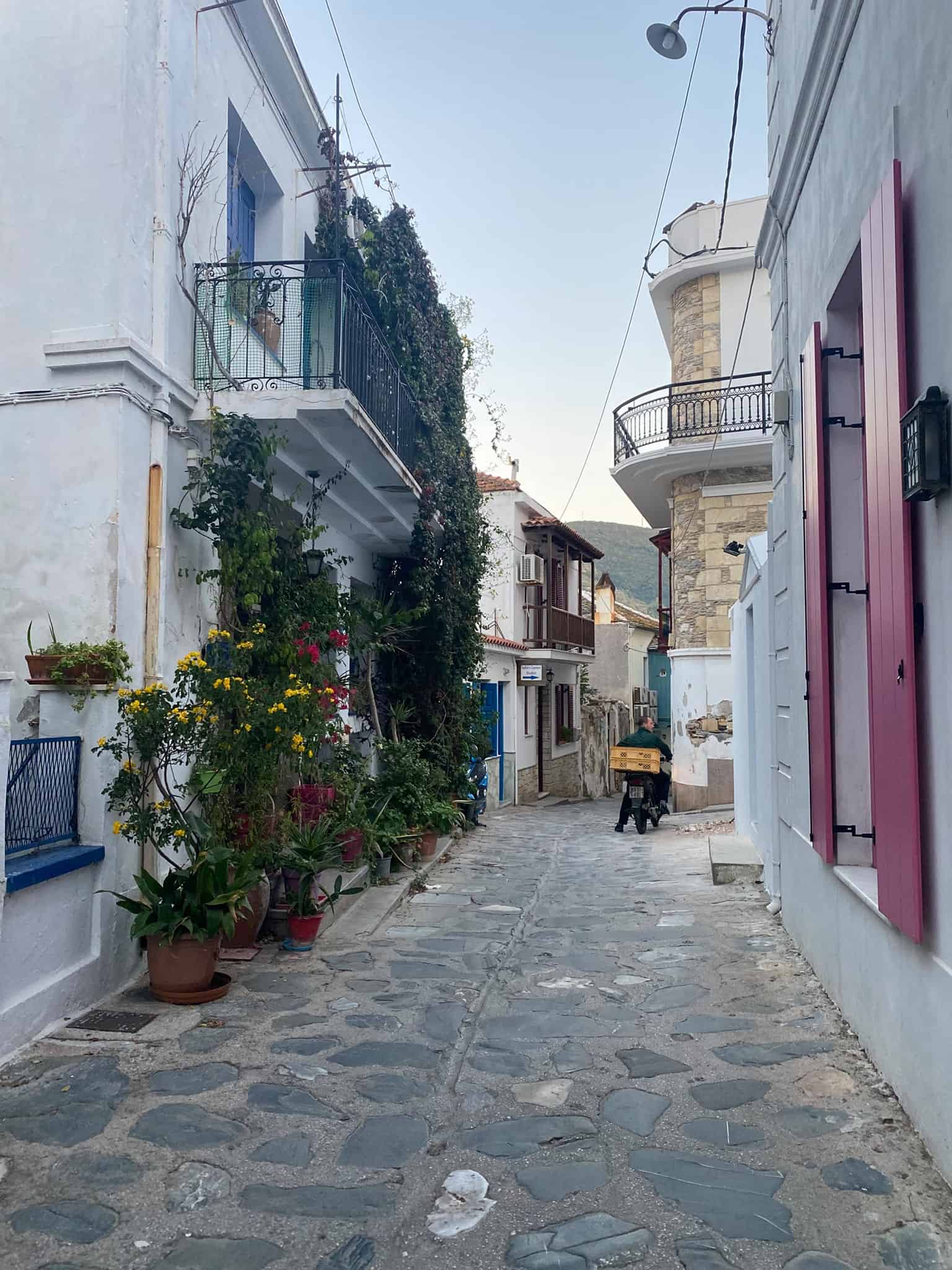
Taking ferries and organising island-hopping itineraries can be confusing for a lot of travellers. Before you start, it is important to understand, geographically within Greece, where the islands that you are interested in visiting are located and plan a logical route from there.
It is better to focus on one island group at a time. For instance, people may want to visit Skopelos Island and Santorini and Mykonos in the Cyclades but these places are nowhere near each other and not easy to travel between.
Even within Greek island groups, ferries do not necessarily run to and from every single island and so you need to travel in a certain order. Ferryscanner is a great website for checking routes and purchasing ferry tickets online.
Ferry services in Greece
There is not a monopoly when it comes to ferry services in Greece and a number of different companies operate here. Some are nationwide, whereas others are only found in certain regions.
Bluestar Ferries, Anes Ferries, and Hellenic Seaways are among the largest providers. Dodekanisos Seaways is a major operator in Rhodes and the Dodecanese islands.
Purchasing and picking up ferry tickets

It’s a good idea to purchase your ferry tickets in advance where possible, especially if you are travelling during the peak summer months between May and September. Some services do sell out and others become very crowded.
You don’t need to reserve your ticket eons in advance. Just a day or two before will do.
You can purchase your tickets online via ferry booking platforms like Ferryscanner, in person at the ferry port, or at designated tourist offices around the city you are in. (However, do note that the latter often charge commissions).
Prior to the global pandemic, if you bought your ticket online, you were simply given a booking reference which you had to take to the port booking office in order to pick up your ticket. Fortunately, now, most companies provide you with an E-ticket direct to your email along with a QR code.
This is then scanned at the port and is much easier.
Always arrive early for your ferries

Similarly, ferry companies usually advise you to arrive at the port an hour before the boat is due to depart. It is always important to arrive as early as possible as sometimes the boats start letting the passengers on board as much as 45-60 minutes before the boat is scheduled to leave.
If you arrive at the last minute, you might find that there are no seats left and you have to stand, or you are sandwiched between a bunch of other people and sat right in the sun. It is even more important to arrive early at major ports like Piraeus in Athens as there are often crowds of people waiting for various different ferries and it can be confusing to see where you need to go.
Different vessels operate on various routes across Greece. There are some high-speed hydrofoils, flying dolphins, catamarans, sea jets, and slower car ferries.
A lot of ferries, especially the larger car ferries, have little cafes on board serving sandwiches, coffee, and other light bites.
Domestic Air Travel in Greece

Domestic flight routes are a convenient way to get between mainland Greece and the islands. Routes operate all year round, with more frequent flights being available in the summer.
Olympic Air and Aegean Air are the two main Greek domestic airlines. Thessaloniki Airport Makedonia and Athens’ Eleftherios Venizelos are the two main gateway airports in the country.
They provide connecting flights from international destinations, to various Greek islands across the Cyclades, the Sporades, etc. Corfus Ioannis Kapodistrias (CFU) Airport and Rhodes Diagoras Airport (RHO) are also very busy.
Some of the airports on the smaller Greek islands, including Mykonos Airport, are literally just one runway and a small airport building.
Buying flight tickets in Greece

You can usually get great deals on domestic flights in Greece. This is particularly true if you are travelling out of season, but even during the summer on popular routes like Athens to Santorini, if you book in advance.
You can often secure tickets for as little as €25-€40 each way. Of course, luggage then comes at an extra fee.
But the point is, to book your tickets as soon as you know your travel dates, especially in July and August. Check Skyscanner for the best deals.
Taking Cabs in Greece
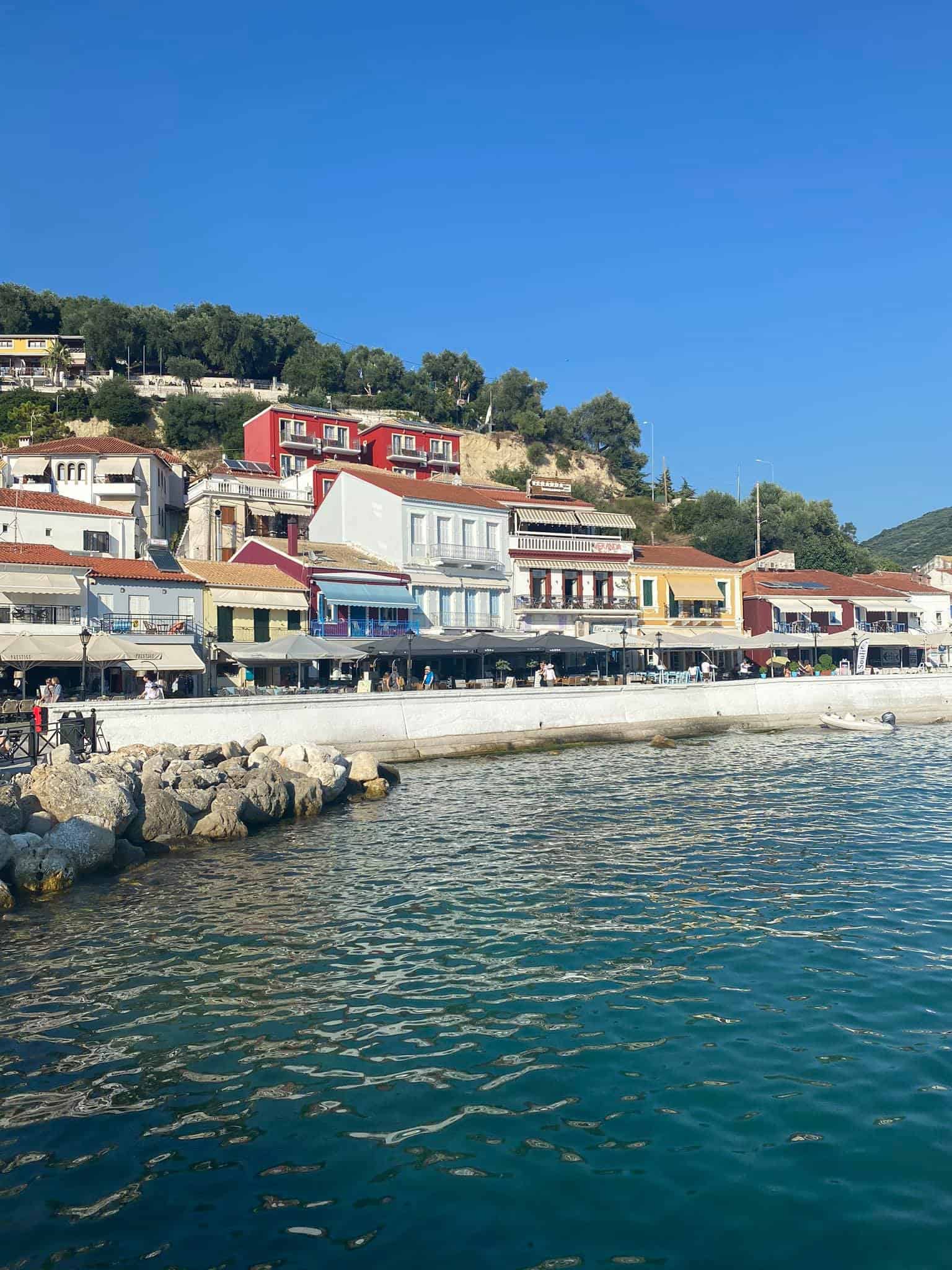
Licensed yellow cabs can be found throughout most places in Greece. You can hail them down on the road as you would anywhere else in the world, and each town/city will have designated taxi ranks.
Sometimes cab drivers can be tricky to deal with. This isn’t exclusive to Greece.
Greek taxi drivers are legally required to turn on their meters and provide you with a receipt. There is a set list of fares and surcharges that they are obligated to follow.
However, it’s not uncommon for drivers to quote you an inflated price without turning the meter on, or to take you on a roundabout route to your destination so that you incur higher charges. To avoid this, download the BEAT taxi app on your phone prior to your trip.
BEAT Taxi app
Uber is banned in Greece, and only licensed cabs are allowed to operate. BEAT connects you with yellow cab drivers.
However, it displays the price prior to getting in the car. As such, you know you are not being ripped off!
BEAT can only be used in larger towns and cities. On some small islands like Paxos, you will find that there are only a very small handful of taxi drivers.
As such, you will typically need to make note of their mobile numbers (your hotel should have these), and call the cab driver when you need a car. This may leave you more prone to receiving an inflated price so check what the going rate should be with a local.
Public Transport in Greece FAQs

Do you have any further questions or concerns about taking public transport in Greece? The answers to some of the most frequently asked questions on the topic are provided below.
Hopefully, you will find the answers you are looking for there. If not, feel free to reach out!
Is public transport free in Greece?
No. Public transport in Greece is not free to use.
However, it is very affordable and competitively priced. So even if you are travelling to Greece on a budget, you will find it convenient to get around the country by metro, bus, and rail.
To give you an idea of how much things cost in Greece, a one-way ticket on the Athens metro costs €1.40. A ticket from Athens airport to the city and its various stations is €12 or €18 return.
You can get long-distance buses between Athens and other Greek cities for €20-40. (The bus from Athens to Thessaloniki is typically around €32 one way.)
Ferries and trains are priced similarly to buses. For instance, you can get from Athens to the islands near Athens (Hydra, Poros, etc) for around €25 on the ferry.
How do you pay for buses in Greece?
You typically need to pay for buses in Greece with cash onboard or by cash/card at the ticket office at the relevant bus station. Some Athens buses do accept card payments.
What is the cheapest mode of transportation in Greece?
The bus is the cheapest method of transport in Greece.
Can you pay by card on Greek buses?
Greek buses generally do not have a POS card machine on board so if you are buying a ticket from the driver directly, you need to pay in cash. However, the automatic machines and the ticket offices usually do accept credit and debit card payments.
Do you have to pay for buses in Athens?
Yes. You need to pay for buses in Athens and the city does not currently have a free transport initiative.
A standard ticket on Athens public transport costs €1.20. Concessions are available for students and adults over 65 but you should be prepared to show your ID.
Concessionary tickets cost €0.50. Children under 6 travel free.
How do you get around in Greece?
Greece has excellent public transport links. You can get around the country and its islands via domestic flights, ferries, buses, and trains.
In Athens, you can use the Athens metro, the buses that run to the various Athenian neighborhoods, and take taxis and transfers. There is currently no metro system in Thessaloniki, although work to build one is underway.
What is the cheapest way to travel around Greece?
The cheapest way to travel around Greece is usually to take the bus. KTEL buses run to most parts of the country – even remote towns and villages.
Still, there are a few exceptions. Sometimes the train works out cheaper for certain journeys and it is also faster, more modern and more comfortable.
So, if you are setting out on a journey that is likely to take several hours, (E.g. from Athens to Meteora/Kalambaka, Larissa, or Thessaloniki), it is worth comparing the prices via both bus and train. The only problem is that the train network in Greece is not extensive and currently only runs to a select few cities.
Can you get around Greece by train?
You can travel around Greece by rail but unfortunately, the network is very limited at the moment. The trains only run between Athens and Patras, Kalambaka, Larissa, Thessaloniki, and a few other destinations.
Are trains in Greece free?
Trains in Greece are not free. To give you an idea of some average costs, a rail ticket from Athens to Patras usually costs around €17.
To Thessaloniki, it costs around €32, and from Athens to Larissa, it costs around €11.00. These prices are of course just averages and are subject to change based on demand, time of booking, and seasonality.
How much is public transport in Greece?
Public transport costs in Greece vary depending on the route and the mode of transport. An Athens metro ticket costs just €1.40 one way.
Most bus and rail tickets between destinations rarely cost more than €20-€30 and most ferry tickets between islands or from the mainland to an island are seldom more than €30.
Final thoughts on using the public transport system in Greece
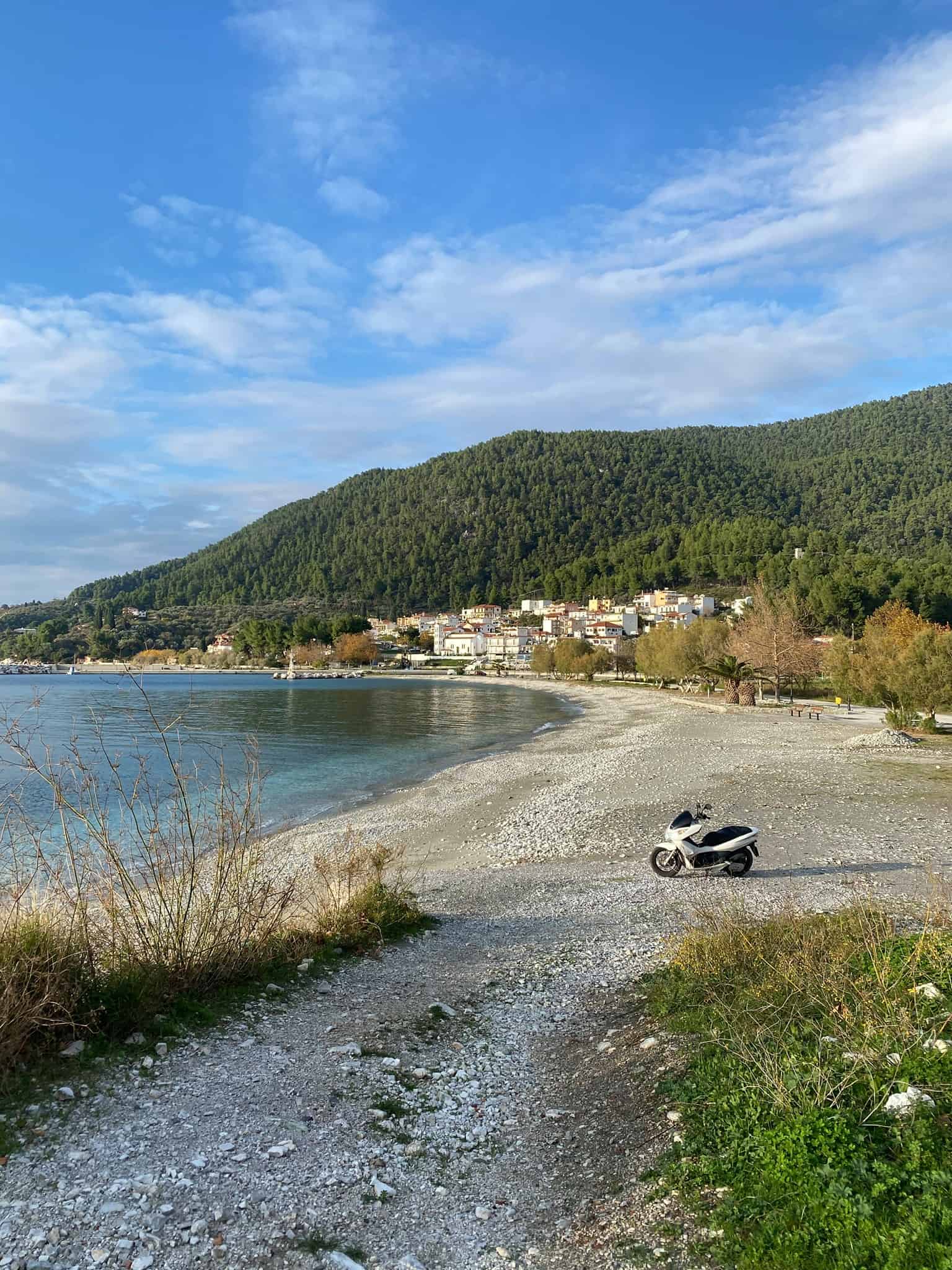
As mentioned, the public transport system in Greece is pretty great. It is only if you are going extremely off-the-beaten-path or travelling to the few areas with poor transport infrastructure that a Greek car rental would be advisable. (In which case, I recommend and always use Discover Cars)
Do you have any additional questions about public transport in Greece or about planning a Greek adventure in general? You are more than welcome to reach out to me if so. Leave a comment below!
Safe travels! Geia sou!





